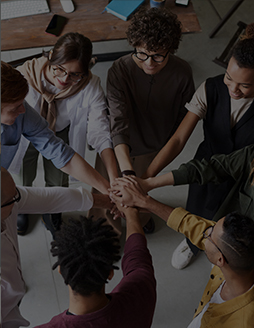SERVICES
“People First”

MEDIATION
The mediation process is a form of alternative dispute resolution that is intended to be confidential. It is a voluntary process in which the parties attempt to resolve their dispute based on their understanding of their own views, the views of others and the reality they face. This process is managed by a mediator who acts as a neutral party. A non-coercive and interest-based approach is used to help each party explore potential options that may lead to a negotiated settlement agreement.
The benefits of mediation are fourfold:
- Disputes are generally resolved more quickly;
- Tensions in interpersonal relations are reduced;
- The costs of mediation are lower than those of litigation; and
- The process is confidential and cannot be used at a later date.
The mediation process is conducted informally which allows the parties to be more relaxed during the process as the emphasis is on resolving conflicts in a non-confrontational manner. At ADR Solutions, we use an interest-based approach to mediation.
Our process consists of five (5) steps:
- Introduction and Mediation Agreement: The mediator introduces the parties and the process. The framework and rules for mediation are discussed and the parties agree on the terms of reference for the process. A protocol is usually signed by the parties.
- Sharing Perspectives: At this stage, the parties are invited to present their perception of the situation. Ideally, this step, facilitated by the mediator, is done in the presence of all the parties. This allows everyone to better understand each other’s point of view. While this is the ideal procedure, the mediator may recommend that this step be done individually. This usually depends on the issue raised and/or the disposition of the parties. While the mediator does not provide legal or financial advice, he will play an advocating role for clarity.
- Identifying the issues: From information shared in the previous step, issues are emerging, and the parties are invited to prioritize those issues. This step is important as it helps to provide the parties with some clarity on their priorities and contributes to identifying small actions (wins) they can implement immediately. At this stage, the mediator will help the parties to stay grounded.
- Generating and evaluating options: The parties work together to formulate options addressing the issues that have been prioritized. Once the options have been generated, the parties are invited to evaluate those options to make sure everyone’s interests are met. The mediator’s role at this stage is to primarily help parties to focus on trying to meet interests rather than focusing on their position. Mediators will also help parties to be creative at generating options and building their desired future.
- Creating an agreement: This last step of the mediation process provides an opportunity for the parties to put on paper the options they have chosen and the implementation process they have agreed to. Generally, the mediator drafts an agreement to be signed by the parties.
COLLECTIVE BARGAINING
Collective bargaining is the process used by Employers and Employees’ representative such as Unions, to negotiate terms and conditions of Employment called “collective agreement”. A collective agreement is a written contract between both parties outlining the rights, privileges and duties of the union, the Employer and the employees. The collective bargaining process is usually subjected to either federal, provincial or territorial legislations. The process and timelines are dependent on those legislations.
That process can also be used to negotiate terms and conditions of employment for excluded or non represented employees.


WORKPLACE RESTORATION
Workplace restoration is a supportive process designed to help re-engage employees after they have been impacted by a disruptive incident. The process focuses on supporting the development of positive working relationships so the people and the organization can successfully move forward. The process is intended to be supportive, improve moral and, ultimately, increase mutual trust.
The workplace restoration process is adapted to the organizational environment.
ORGANIZATIONAL DEVELOPMENT
Organizational development (OD) is a process designed to help organizations manage change and achieve greater effectiveness. These changes are produced by developing, improving and strengthening their strategies, structure and processes using behavioural science-based interventions. OD is anchored on a set of core values and principles that guide behaviours and actions. These values are:
· Respect and inclusion
· Collaboration (our approach is highly participatory)
· Authenticity
· Self-awareness, and
· Empowerment
In order to be effective, the OD process needs to be planned, organization-wide, managed from the top and focusing on the system’s effectiveness and health. It is different than any other change process as it is ongoing to help an organization develop its ability to assess its current functioning and adapt it to achieve its goals.
OD interventions focus on interpersonal relations as well as on group and organizational dynamics. Some examples of OD interventions are: individual interventions such as strategic planning, coaching, group intervention (their structure, roles and responsibilities, etc.), team building, process mapping, organizational (structural) design, training, etc.
The approach we use is based on the action-research model. This systemic approach, developed by Kurt Lewin, follows 5 steps: 1) Identification of the problem; 2) Gathering and interpretation of data; 3) Action based on evidence; 4) Evaluation of results; and 5) Next steps.
Some of the key benefits of this approach are:
· It achieves the strategic and operational goals of the organization.
· It is methodical which helps planning and implementing actions with specific milestones.
· It’s approach is holistic, therefore looking at the big picture.
· It shifts the system into a learning organization.
· It fosters mutual trust and interdependence that helps rebuild the organizational culture.



What Makes ADR Solutions Different?
Contact Us Today to Book A Free Consultation
BOOK AN APPOINTMENT
Contact Us Today
Contact ADR Solutions by using the form below.

